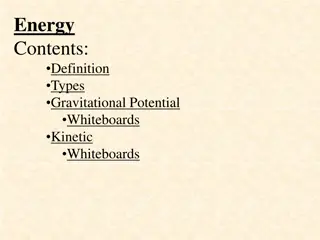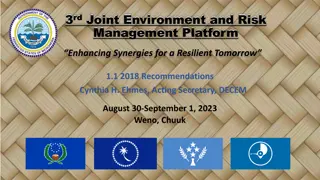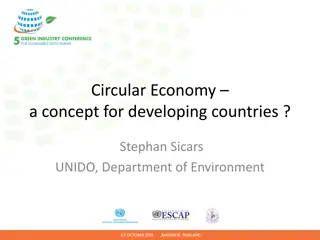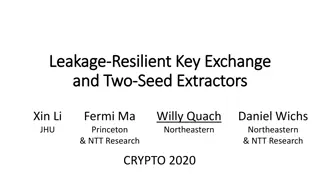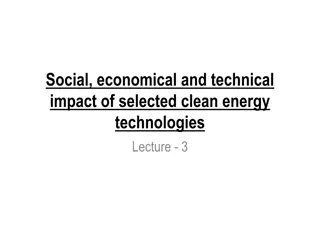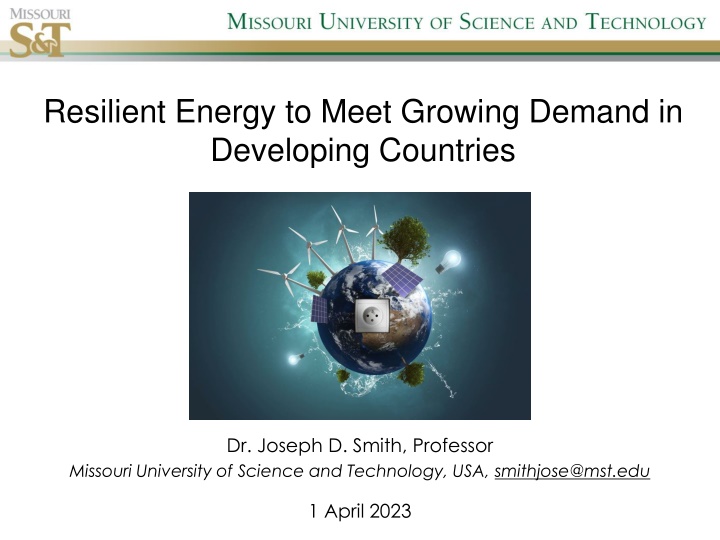
Resilient Energy Solutions for Developing Countries
Over 1.5 billion people lack access to electricity, hindering economic growth and healthcare services in developing nations. Access to clean cooking fuel remains a challenge impacting women disproportionately. Hybrid energy systems offer a sustainable approach to address these energy disparities.
Download Presentation

Please find below an Image/Link to download the presentation.
The content on the website is provided AS IS for your information and personal use only. It may not be sold, licensed, or shared on other websites without obtaining consent from the author. If you encounter any issues during the download, it is possible that the publisher has removed the file from their server.
You are allowed to download the files provided on this website for personal or commercial use, subject to the condition that they are used lawfully. All files are the property of their respective owners.
The content on the website is provided AS IS for your information and personal use only. It may not be sold, licensed, or shared on other websites without obtaining consent from the author.
E N D
Presentation Transcript
Resilient Energy to Meet Growing Demand in Developing Countries Dr. Joseph D. Smith, Professor Missouri University of Science and Technology, USA, smithjose@mst.edu 1 April 2023
Over 1.5 Billion people dont have access to electricity Kakinada, Nepal Day 3 - Laufer Energy Symposium Welcome 2
Energy Equity 1.3 billion people lack access to electricity (85% in rural areas) Rich countries use much more electric power for computers, refrigerators, and energy-hungry health care than developing countries! World s energy demand increase <50% by 2040 As more energy produced; more CO2 is released by dirty fuels burned in low efficient systems Economic development of poorest countries restricted by polices made by richest countries! New energy for developing countries must be affordable and clean! Rich countries must provide clean efficient energy systems to developing countries can t deny access to services only rich countries enjoy! Lack of electricity means no refrigeration for pharmaceuticals and increased food born illness Lack of electricity means students must study under streetlights Day 3 - Laufer Energy Symposium Welcome 3
Access to Clean Cooking Fuel: ~2.8 billion people rely on traditional biomass for cooking Air pollution from inefficient stoves cause more deaths/day than malaria + tuberculosis + HIV/AIDS Access to clean cooking energy impacts Women 2x more than men (UN, 2010) UN Sustainable Goal 7: Universal access to modern fuels by 2030, both to mitigate the household health effects of dirty fuel use (wood, charcoal, dung, kerosene) from household air pollution (HAP) and to enable them to develop productive, educational and self-fulfilling opportunities for women and girls foregone due to the labor required to obtain and use such fuels Source: Tanaka, N., Kjorven, O., Yumkella, K.K., Energy Poverty; How to make modern energy access universal? Special early excerpt of the Energy Outlook 2010 for UN General Assembly on Millennium Development Goals, September (2010). Day 3 - Laufer Energy Symposium Welcome 4
Hybrid Energy with distributed generation in local Hybrid Systems combine local sources of Fossil + Renewable energy sources U.S. Example: Integrated Energy Center Sunflower, Kansas Uses multiple energy sources Generates multiple energy products Overall efficiency increased Creates local jobs in rural areas Manufacturing value-added products Energy focus on: Integrated wind/solar with fossil Dynamic System optimization Day 3 - Laufer Energy Symposium Welcome 5
Largest increased energy demand from developing countries! Hydro Energy Efficiency: 80.22/143.3 = 55.98% Geothermal + Biomass Wind 63.1 Quads Lost Work Solar Nuclear Energy Efficiency: ? How will transportation be powered? Coal Fossil energy will remain our largest source of energy what can we do to reduce impact on the climate? Natural Gas 80.22 Quads Useful Work Petroleum Can we become independent of crude oil? Leighty, B., Energy Storage with Anhydrous Ammonia: Comparison with other Energy Storage, Ammonia: The Key to US Energy Independence, 29 30 September, Minneapolis, MN (2008) US Energy Use 2050 (Est. 143.3 Quads) Day 3 - Laufer Energy Symposium Welcome 6
Welcome See demonstration at: http://www.youtube.com/watch?v=XCsswquQ6H8&feature=related



